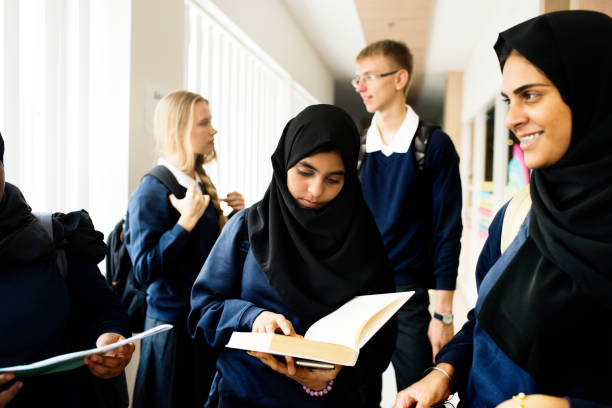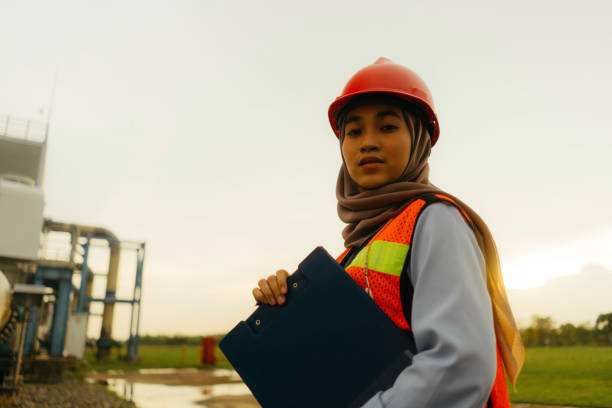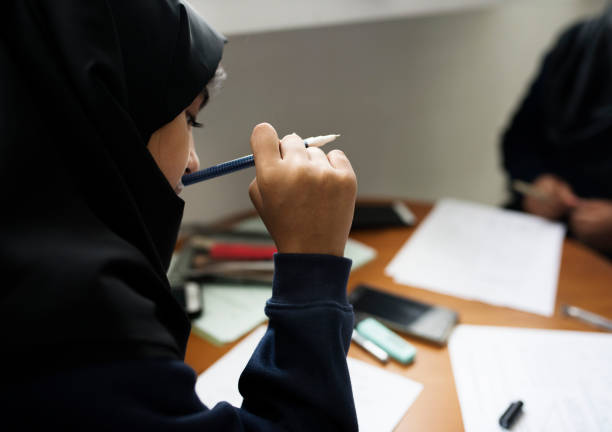The Benefits of Hijab for Muslim Women in Education: Empowerment through Modesty
In today’s diverse and multicultural society, education plays a vital role in empowering individuals and fostering social integration. For Muslim women, the decision to wear the hijab, a religiously mandated headscarf, can have significant benefits within an educational setting. This blog post aims to explore the benefits of hijab for Muslim women in education, highlighting how it promotes self-confidence, inclusivity, and academic success.
1.Expression of Faith and Identity

The hijab serves as a visible expression of a Muslim woman’s faith and identity. By wearing the hijab in an educational environment, Muslim women demonstrate their commitment to their religious beliefs and values. This act of devotion can foster a sense of purpose and provide a strong foundation for personal growth and spiritual development.
2.Encourages Modesty and Self-Respect

One of the core principles of wearing the hijab is to promote modesty. Modesty extends beyond physical appearance and encompasses a demeanor that is respectful, dignified, and self-assured. By adhering to the hijab, Muslim women learn to focus on their inner qualities rather than external appearance. This emphasis on inner beauty and self-respect cultivates a positive self-image, helping them to navigate the challenges of education with confidence.
3.Creates a Sense of Belonging and Inclusivity

In educational institutions with diverse student populations, the hijab plays a crucial role in creating a sense of belonging and inclusivity for Muslim women. By wearing the hijab, they visibly identify themselves as part of a specific religious and cultural community. This visibility helps to dispel misconceptions and stereotypes, promoting dialogue, understanding, and acceptance among peers and educators. It encourages an environment where everyone’s unique perspectives and backgrounds are respected and valued.
4.Fosters Focus and Academic Success

The hijab can act as a symbol of commitment and focus in the pursuit of education. By embracing the principles of modesty, Muslim women are less likely to be distracted by external factors that may hinder their academic progress. Wearing the hijab can provide a sense of discipline and remind them of their educational goals. It serves as a constant reminder to prioritize learning, persevere through challenges, and maintain a strong work ethic, ultimately contributing to their academic success.
5.Empowers Women to Challenge Stereotypes

In societies where stereotypes and prejudices persist, Muslim women who wear the hijab in educational settings become powerful agents of change. By actively engaging in intellectual pursuits while wearing the hijab, they challenge preconceived notions and debunk stereotypes associated with Muslim women. They become role models, breaking barriers and inspiring others to pursue education and professional endeavors without compromising their religious and cultural values.
6.Enhances Professional Development

For Muslim women pursuing higher education or entering the professional world, wearing the hijab can have practical advantages. In many countries, laws and workplace policies protect an individual’s right to religious expression, including wearing the hijab. By confidently wearing the hijab, Muslim women assert their right to religious freedom and can focus on developing their skills, knowledge, and expertise without feeling the need to compromise their identity.
Conclusion
The hijab, as a symbol of religious and cultural identity, brings numerous benefits to Muslim women in education. From fostering self-confidence and inclusivity to promoting academic success and challenging stereotypes, the hijab empowers Muslim women to excel in their educational pursuits while staying true to their beliefs. By embracing the hijab, Muslim women navigate educational environments with grace, resilience, and a strong sense of purpose, contributing to a more diverse, inclusive, and harmonious society as a whole.










